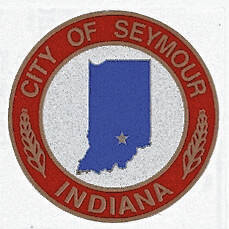
A little more than a year after being established, the Jackson Park Economic Development Area is expanding.
During recent meetings, the Seymour Plan Commission and Seymour Common Council approved a resolution to amend the economic development area and economic development plan to include three more parcels.
Those include Walmart Distribution Center, where a $200 million personal property investment was made for a new conveyor system; The Royal Group in the Eastside Industrial Park; and 76.69 acres in the back side of that industrial park that recently was annexed into the city and is being developed.
The resolution was approved 9-0 by the plan commission with President Jeri Wells and Dave Earley absent and 6-0 by the common council with Chad Hubbard absent.
When the economic development area was established in December 2022, it included three parcels — one where an apartment complex was being built along Miller Lane, another where an apartment complex is set to be built along Burkart Boulevard South and the other where Goecker Construction Inc. is located on Jackson Park Drive.
The Jackson Park EDA is Seymour’s fourth tax increment financing district. The others are Burkart Boulevard/Interstate 65, Bushmann and Silgan.
During the plan commission meeting, commission member Rick Schleibaum asked on a TIF district if all or a percentage of the property taxes generated from that area go back into it.
“It is new growth of the property tax, so what it does is it freezes the base rates where they are, and those base rates then stay there for the length of the TIF,” Seymour Mayor Matt Nicholson said. “Then the growth is what goes into the TIF funds.”
TIF districts are in place for 25 years.
“My problem with TIF districts is the city needs X amount of tax money, and if you keep slicing off parts of tax money for other projects, everybody’s tax rate has to come up to cover the need for the city,” Schleibaum said.
“We are only allowed to grow by X percent every year, and we almost always make that number,” Nicholson responded. “Anything over top of that is based on the six-year farm income, so it’s based off the acreage that is farm acreage. Anything that we grow beyond that then turns around and goes into what are called tax caps.”
The mayor said those tax caps magically fall off, and no one has ever figured out exactly where they go.
“But ultimately, we’re only allowed to grow so far,” he said. “With a TIF district, we are allowed to grow into that without losing the tax caps on top of it on those parcels.”
Nicholson said the tax money collected from those parcels goes back into the areas the redevelopment commission invests in to better the community, including industrial development, education, downtown and quality of life.
“A lot of times, our road funding is funded through the redevelopment commission as opposed to pulling it straight out of tax dollars,” he said. “When I say straight out of tax dollars, I mean the industrial property tax, not the personal property taxes.”
At the time of establishment of a TIF district, Matt Frische with Reedy Financial Group said all of the base assessed value of a parcel still goes to the overlapping units, and if there is any additional development, that will be captured in the form of incremental assessed value. That will generate TIF revenue.
At the end of the 25-year period, Frische said all of the assessed value that has been harbored within the TIF district will be released to the overlapping units, effectively just lowering the tax rate.
Initially, it was estimated that the Jackson Park TIF district will generate an assessed value increase of approximately $23 million for real property.
The redevelopment commission anticipates the new economic development area will promote significant opportunities for gainful employment for the city, assist in the attraction of major new business enterprises to the city, provide for local public improvements in the area, attract and retain jobs, increase the property tax base and improve the diversity of the economic base of the city.
It’s anticipated these benefits will be attainable through the capture and subsequent reinvestment of newly assessed real property taxes that will become taxable.
